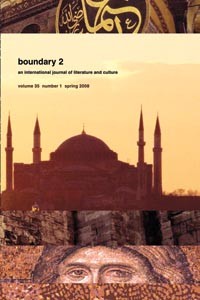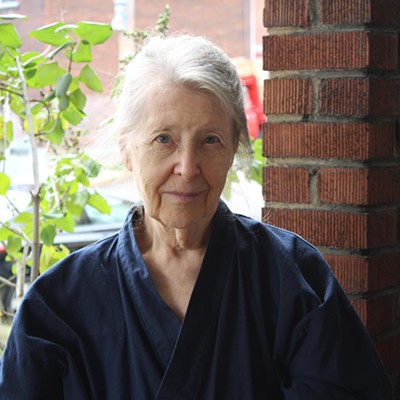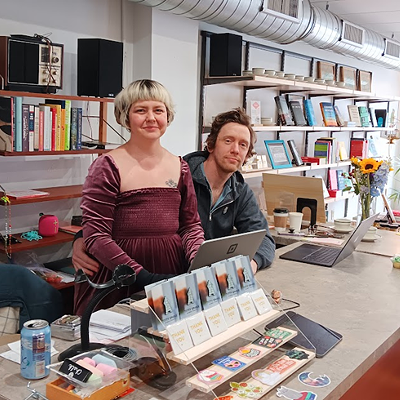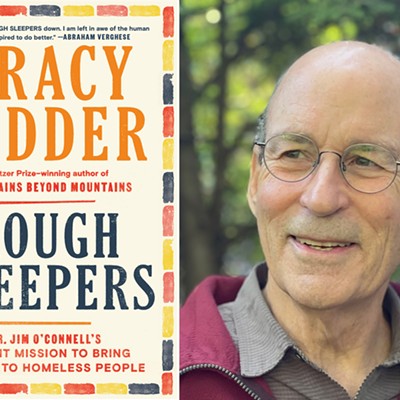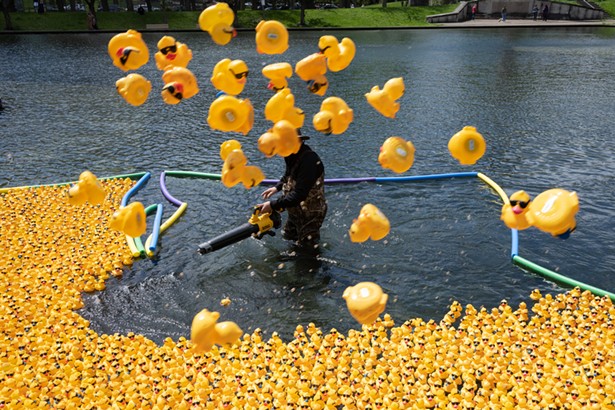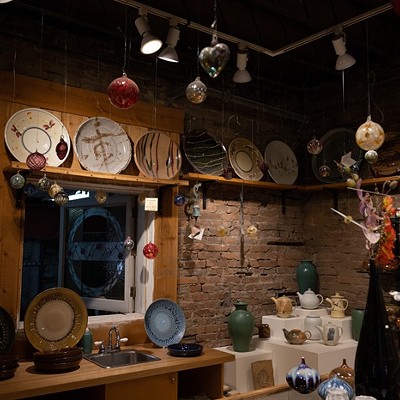Anyone who watches cable coverage of an election will recognize how literary ideas mix with politics. "Narrative," "plot twist," even "character arc": These belong to the lexicon of today's political pundit.
boundary 2, a journal edited at the University of Pittsburgh by English Professor Paul Bové, also examines the interaction between politics and culture. Yet while that subject has moved, implicitly, into the cozy mainstream, boundary 2 (published by Duke University Press) has remained consistently challenging, providing a volatile and significant forum within academia.
A university-library standard, the journal boasts the status of a "must-hold" humanities publication, as determined by the American Library Association. In a 2006 issue of the minnesota review (another lower-case-titled cultural-studies journal), Jeffrey Williams mapped boundary 2's prominence. "The late 1960s and early 1970s," he wrote, "were a transitional time in literary studies, as well as in American culture and history. Founded in 1970, the journal boundary 2 marked that transition."
Under Bové, the journal has kept marking transitions. Bové did his graduate work in Binghamton, New York, where he studied at the state university with William Spanos, the journal's founding editor. Bové's editorial reign has maintained the journal's founding focus on the growth and progression of scholarly discussion. As Pitt's Web site for boundary 2 puts it, "Paul A. Bové has edited the journal since 1989, during which time it has evolved from a journal of 'postmodernism' to a journal dealing theoretically and historically with literature and culture in ways important to a transitional era in media, writing, politics, and ideas."
The journal's contributors do indeed address a wide array of issues in both contemporary and historical culture. Even something as physical as geography is analyzed for its cultural and social entanglements. In the spring 2008 issue, for instance, an article by Arif Dirlik discusses "ways of mapping human societies." Such mapping strategies, he writes, "establish boundaries that are thought to express something about what they contain -- more often than not a political unit that derives its identity from particular social and cultural practices." One example: the relationship between spatial boundaries and Chinese culture. Elsewhere, Henry Veggian reviews Against the Day, Thomas Pynchon's recent novel of turn-of-the-century intrigue, and concentrates on the historical side of this historical fiction, describing the novel's relationship "to early twentieth-century American intellectual life."
The journal also has room for articles exploring a role for the arts relatively removed from considerations of society and history. A piece on Beethoven by Jim Merod, for instance, makes some refreshingly old-fashioned points, noting the music's relevance to an individual listener, its ability "to vivify thought, emotion, and purposeful awareness."
Sarah Juliet Lauro and Karen Embry, meanwhile, set out to demonstrate problems with the theory that human subjectivity is strictly a product of socio-political movements. Lauro and Embry amusingly compare that academic tendency with zombie films, which also depict "a consciousless being that is a swarm organism." The world of indomitable social forces imagined by some scholars comes to appear, in its resemblance to zombie movies, rather too imagined.
To allow such contentious and varied arguments to coexist seems to position boundary 2 to continue to mutate, to resist cliché through intellectual complexity. Yet despite the journal's challenging subject matter, despite its jargon-rich language and a name like a joke that needs to be explained -- what would be lost if the "b" in boundary were upper-case, anyway? And what happened to boundary 1? -- the basic combination of political and cultural thought has proven resonant. The writers and readers of boundary 2 have been teaching in major universities for decades now; it's quite possible that the journal has, in this indirect way, strongly influenced how we talk about politics.

